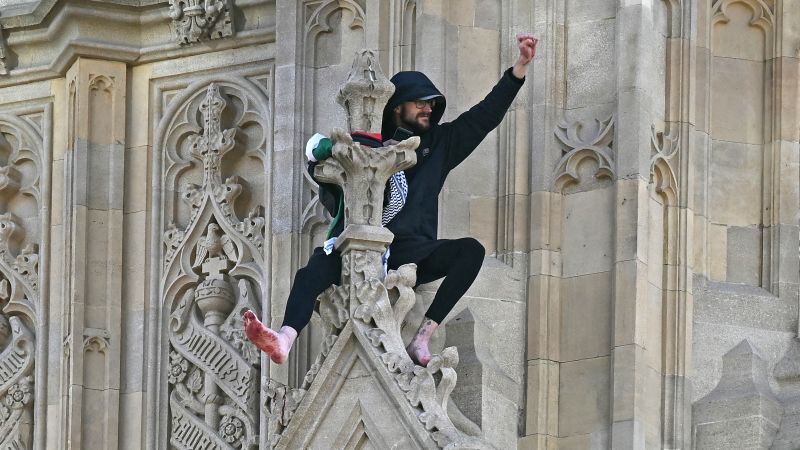Flood the golf courses, demolish the freeways: what could Melbourne look like in 2070?

In half a century, should Melbourne’s golf courses be flooded and transformed into wetlands? Could the city’s freeways be replaced with public parks? Will underwater robotic drones have a part to play in ridding our waterways of invasive species?
These are some of the questions explored at the National Gallery of Victoria’s Reimagining Birrarung: Design Concepts for 2070, a thought-provoking, optimistic and occasionally uncomfortable exhibition that presents speculative visions for the Birrarung (Yarra River) from eight of Australia’s leading landscape architecture studios. These practices were invited by the NGV’s curators, in association with the Birrarung Council and with guidance from Wurundjeri Woi Wurrung elders, to imagine what various sites along the Birrarung might look like in 46 years. And the results are varied.
Realm Studios’ project, for example, examines how advances in artificial intelligence and drone technology could keep the Birrarung healthy by deploying a fleet of subaquatic drones called “Birrabots” that would navigate the river, helping to maintain ecological balance by monitoring water quality, pollutants and chemical composition.
In a vastly different approach, ASPECT Studios uses historical mapping, animations and peaceful renders to suggest that a large section of Melbourne’s South Eastern Freeway could be replaced by a public urban forest. This vision is based on a future that is less reliant on cars; fewer vehicles would allow for a greenbelt that would make more space for large trees, such as the great river red gum, to thrive alongside humans, who could swim, kayak and partake in other outdoor activities in the heart of Melbourne.
While the idea of removing a freeway or deploying a fleet of underwater bots may seem radical or even fanciful, the eight studios throughout the exhibition “have resoundingly said that what they have designed could definitely be done”, says Gemma Savio, who co-curates the exhibition with Ewan McEoin. Or, as ASPECT writes: “The ideas presented through this project are propositional but highly possible and, ultimately achievable. All that is needed to see them achieved is community and political will.”
The political will is gaining momentum. The exhibition was conceived in the wave of infrastructural, engineering, scientific and ecological projects that emerged after the passing of the historic Yarra River Protection (Wilip-gin Birrarung murron) Act by the Victorian state government in 2017.
The law recognises the Birrarung as a living entity, granting it protection and legal rights. It bestows care of the river to the Wurundjeri people through the formation of the Birrarung Council. To date, it is the first and only legislation of its kind in Australia but, perhaps, not the last.
“We hope that this is just the beginning for all rivers and all waterways,” says Uncle David Wandin, a Wurundjeri elder and Birrarung Council member, in a video that welcomes audiences into Reimagining Birrarung.
The team behind the exhibition hopes so too, and believes that the field of landscape architecture has an important role to play in achieving this. “You can write an article, you can tell a story, you can do an interview,” Savio says, “but unless people can actually see what’s possible, it’s often difficult to imagine.”
after newsletter promotion
As such, the exhibition harnesses visualisation tools typically used in landscape architecture to allow visitors to grasp what could be possible, then demand they become realities. This is key, Savio says, because “for policy to change and big decisions to be made, there needs to be public backing”.
Perhaps the most pressing action that the public can back is deprivatisation. Through all eight visions flows a resounding call for privately owned lands to be returned to traditional owners or the public. Many projects propose that these private sites – from which water has historically been diverted, extracted and manipulated – should be reflooded, restoring natural billabongs, ancient wetlands and seasonal changes.
Bush Projects, for instance, identifies 1,500 hectares of privately owned agricultural land which could be converted into what it calls a “Birrarung Bio-Zone” through public acquisition. OFFICE, meanwhile, proposes that four golf courses in Kew and Ivanhoe should be transformed into huge public wetlands, with water rights returned to the traditional owners.
“In a climate crisis, and in an increasingly dense city, the open spaces that we have left need to work a lot harder than golf courses,” says Steve Mintern, a co-founder of OFFICE. The studio’s beautifully edited film, Aqua Nullius, cites that the golf courses now host about 200,000 visitors a year, while Melbourne’s Botanic Gardens welcome 1.5 million on a similar footprint.
Who should own this river? Should anyone? How did we let the Birrarung become a profit-driven resource? And could we help shape a healthier, more community-driven future for it? These are some of the questions visitors may ask as they leave the exhibition through the NGV’s glass doors, on to the banks of the Birrarung itself.
Related
5 Things I Never Play Golf Without: David Dusek
Our 11-handicap equipment writer always brings his favorite divot repair tool, a portable speaker and some high-tech gear to the course.As long as the weather i
Donald Trump’s golf course wrecked by pro-Palestine protesters
Pro-Palestinian protesters have vandalized parts of U.S. President Donald Trump's golf course in Scotland in response to his proposal for the reconstruction of
Man holding Palestinian flag scales London’s Big Ben hours after…
CNN — Emergency services were called to London’s Palace of Westminster on Saturday a
EPD: Drunk driver parked car on golf course
EVANSVILLE, Ind. (WFIE) - Evansville police say they arrested a man after finding him drunk in his car that was parked on a golf course.Officers say they were c











